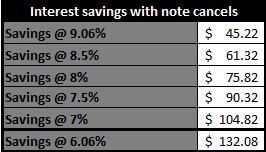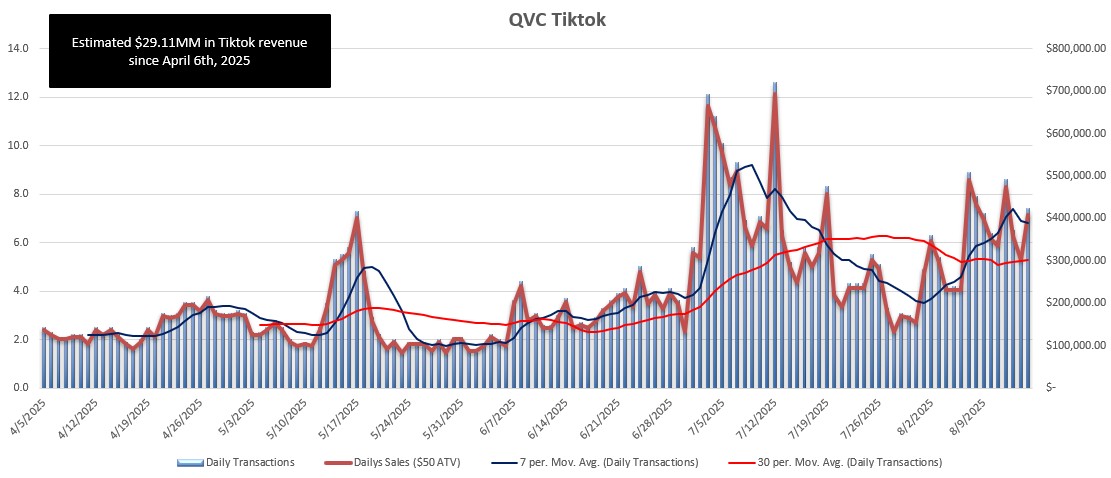Thank you for sharing, 60. It would be good to hear your take on what TJ has written here. I will provide my take but would appreciate any thoughts you have on what he's put together here.
TJ starts by stating him and Andrew are in disagreement on the quality of the business. He lists four points out for the decline:
- a fire obliterating their largest distribution facility
- a severe post-COVID discretionary retail recession that is still being felt,
- an eyeball-drawing election that affects QVC but not other retailers
- tariffs
I find this to be rather interesting as they are all individual problems of course but are they the root cause? I also find it interesting he not once mentions their main distribution model, cable/satellite, in secular decline. I find this to be a significant and structural flaw in TJ's thinking and analysis as it is the root cause of their problems.
The fire happened in December 2021 and they moved forward with ATHENS which concluded last year. At this stage are we to continue to blame the fire? They have lost 162K existing customers since Athens concluded. Was one warehouse so critical that the structural integrity of the business can not recover after years? No doubt they claim they lost 1M customers since December 2021 as a direct result of the fire, and delays in product shipping and what have you possibly created permanent shopping changes for those customers, but the continued decline indicates there are other problems.
The election would have impacted revenues in that period (I don't buy that excuss BTW) but is a one-time election going to stop customers spending altogether? Tariffs just came into play in Feb-Mar and effects are just now starting to be felt. Rawlinson also stated in Q2 earnings " Although the tariff rates vary, we did not see significant impact to demand for items with tariff price adjustments".
Using a mix of multiple data points myself (none which include his 4 points) how I am I able to get so close to predicting existing customers if the problems he outlines are why QVC is in decline? And since existing correlate so high with revenue this is exactly the predictor one needs.

Let's go to the bonds. I find it interesting the most important piece, senior bonds, gets 134 words dedicated to it while LITNA and the DTL get 422 words. This is putting to much of a priority into the wrong portion of the capital stack which makes sense as he notes in comments he has a tax background but it's matters less in the full capital stack IMO.
The value is at OpCo with QVC, Inc and the current problems are at QVC, Inc. The majority of EBITDA is at QVC, Inc, the 2026 maturity of the facility is at QVC, Inc, the covenant restrictions are at QVC, Inc, the cash flows are at QVC, Inc. Liberty Interactive (HoldCo) owns 100% of the QVC, Inc equity but the value is in what they hold and QVC Groups owns Liberty Interactive. This is important for bankruptcy.
TJ grossly oversimplifies what can happen here. They can of course submit a tender of $0.50-$0.60 cents on the dollar but this requires QVC to make seven solicitations which EACH tranche voting > 50%, in which case any hold-outs could then get crammed down. Until then, what he suggests is just low probability. And what happens if a single trache just says no? What if multiple? He also doesn't engage with the idea that 9 out of 10x what happens here is remainder of debt is swapped for equity. I find this glaring oversight or just pure omission because these bonds are senior secured against the equity of QVC, Inc. If the equity of QVC, Inc as a going concern is so valuable then why are they walking away for haircuts? This goes against their own interests. The only way the class would get lumped together and require one major vote would be.......in bankruptcy. Otherwise out of course each is it's own piece on the chess board.
"Therse’s a reason the bond prices are so depressed. They’re not expecting to get par." - normal in distressed companies. Will likey fall further once they file too but what value they extract after is a different game.
QVC, Inc itself had $330M in cash + the $975M they just drew which would leave them with $1,305M in capital to leverage for this. The rest of cash is with Liberty, CBI, QVC Group.
TJ states "That said, the ‘27s and ‘28s may probably be left alone, since there isn’t much principal left anyway." so if we assume they just stay and I do 50% for the rest this will cost QVC, Inc $1,015M and that's before taxes on gain/loss and various considerations and transaction costs. This leaves QVC with ~$290M (less because of what I mentioned) and a revolver balance of $2,900M.
If EBITDA falls to $850M the leverage ratio, without all the 2027-2068 debt is 3.41x JUST with the revolver drawn but with 2027-2028 still in play as TJ suggested that is leverage ratio of 3.5x they're still restricted in up streaming cash outside of debt payments + tax sharing. IMO this is why hand waving their distribution problems away is a mistake.
Even if they somehow got all the 2027-2068 debt gone this saves them $132.08M in annual interest expense but if revolver reprices high, which I have written multiples times I cannot see why it won't at around 9.06% this saves them only ~$45.22M annually. The issue isn't liquidity and their ability to service the debt it's the business is in decline and the banks clearly don't want to make a friendly rollover as TJ suggested prior. This makes the 2026 revolver a roadblock which Andrew calls out. All this debt is so termed out that and doesn't even address the problem which is the business.

Tiktok is a rounding error on revenue and if you are on Tiktok and browse what they're selling its discounted heavily likely to spure volume movements and boost customer numbers, but revenue is too small in total. ATV is likely less than the $55 I am using here but if we just "roll" with $55 ATV this is only a $29.11M business. And if the ATV is lower then of course this business is worth less.

The rest needs to come from these other platforms they're on and I challenge that's not working too well or fast enough is more likely the correct take. Keep in mind Tiktok customers were not in the counts but the revenue was and that didn't stop 11% declines did it?
Now while Andrew states there is no need for a DIP this is true from a liquidity front, but the banks could work an agreement to make the prepeition debt into DIP for postpetition and move to super priority. If QVC is going into this making enemies of the bond holders & banks then that liquidity burns up REAL fast. they only have 12-18 months to create a new business plan in bankruptcy too so their time window of control is limited plus it still needs creditor votes. Regardless, Andrew's point if valid and until we see how the claims we can only guess.
What I believe will happen is chapter 11 is filed and revolver will convert to new paper and the $2,146M of existing notes will convert to new equity. 2027/2028 get higher cash (maybe $0.85) but the rest is just debt-for-equity swaps. The valuation will likely be at a 5x multiple and with 10% bankruptcy costs and $850M EBITDA this would put the value into positive equity territory. There would then be a reduction in $128.08M in interest and last year QVC, Inc paid $108M in dividends to QVC Group which now stay home for an immediate $240.08 cash flow through. There's more money in the banks taking this long-term than taking short-term haircuts.
Now I already wrote that Liberty Interactive has a 2029 loan to QVC Global for $1,740M and it's on the books of QVC, Inc as an asset. While normally this is nothing, in a bankruptcy it's gonna be a problem. Normally what would happen is senior unsecureds would throw a bone to jr debt to get plan to be approved but with the lower valuation + the fact that the parent on paper owes $1,740M this will likely be used to prevent any upstreaming. Accounting movements or not in bankruptcy QVC, Inc has it as an asset on their books and it will be used for creditor benefits.
Given the senior secured debt + bank credit at best Liberty would swing 5% equity warranty in the new company (before dilution) but regardless the cash dividend is gone to QVC Group.
" I’ve never heard of a distressed company with this much cash at their disposal to make deals" - Wolfspeed just filed and they had $730M in cash too and existing equity only got 5% before dilution. A good chunk of their debt was only convertibles too.
I have already written about most of this but I just don't see it as TJ does. I see value from QVC, Inc being taken in a filing leaving Liberty/QVC Group with slivers or nothing making QVCGA rather worthless with only cash assets which will bleed over time and CBI + venture scrap.
-Sean |







